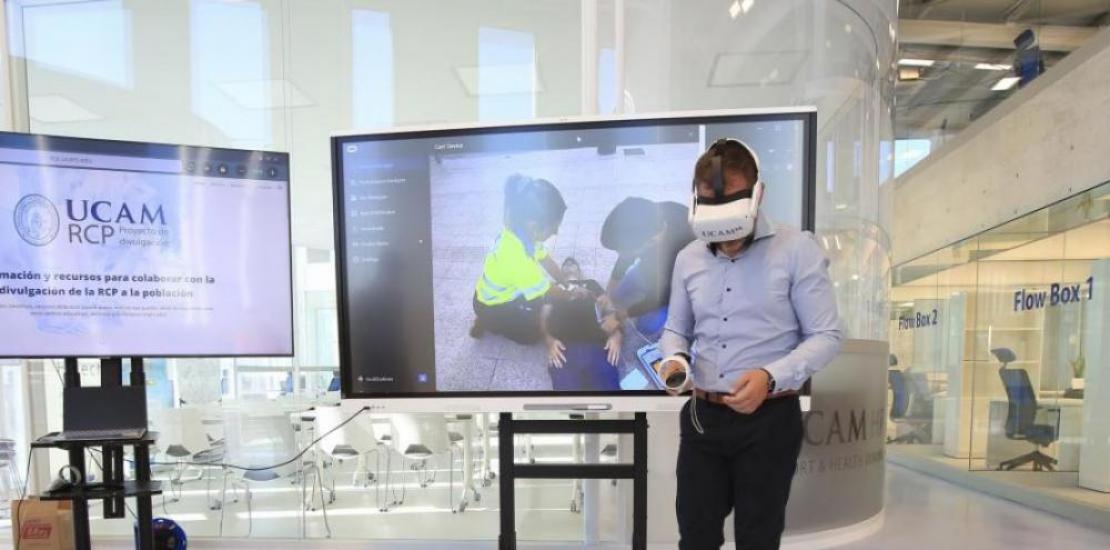UCAM provides society with interactive resources for learning CPR
Its new website, rcp.ucam.edu, is continually updated and provides information and in-house material, adapted to all ages.
Up to 80% of people who suffer a cardiac arrest outside a healthcare facility could be saved if
action were to be taken in the first 3-4 minutes with chest compressions and the use of an
external defibrillator. However, this can only be achieved by having a population trained in
these techniques, the learning of which can be introduced in schools.
Since its foundation, the Universidad Católica de Murcia has worked on the dissemination
and training in first aid and CPR. In recent years, the Research Group "New Technologies for
Health" led by Professor Manuel Pardo, has stepped up its efforts to create educational
resources that reach the greatest possible number of people.
Coinciding with the celebration, this Sunday, of the European Cardiac Arrest Awareness
Day, on Friday, the universidad Católica de Murcia presented its web site rcp.ucam.edu, in
which it compiles its scientific content and teaching resources, in different and attractive
formats, many of which are interactive, such as a song for children–with lyrics that explain
the steps to follow and a rhythm that marks the chest compressions–explanatory videos; or
through virtual reality or augmented reality. The contents will continuously be updated and
are of great interest for educational centres as well as any citizen. ‘It is important to assume
that science, if does not go beyond the walls of universities, does not benefit society.
Therefore, we have to take science to the streets, and this is another way of doing just that,
linking it to actions as important as an emergency; something that could happen in everyday
life,’ says Estrella Núñez, vice-rector of Research at UCAM.
We are in the street and suddenly we see a person suffering a cardiorespiratory arrest. What
should we do? This situation is brought to life in one of the 360° videos that can be found on
the new website, in which the steps to follow are explained in detail. The user feels as if they
are really experiencing the situation, interacting with all its elements, either through the
computer or with virtual reality glasses. New technologies enable a close user experience,
making processes more effectively internalised with fully immersive content. Through a QR
code, and with the simple use of a smartphone or tablet, a child can learn how to perform
CPR correctly first-hand. To do so, they simply need to download the code and print out an
image on which the video will be projected–both available on the web–, which will allow you
to learn the technique. ‘We work with virtual, augmented and audio reality, achieving an
immersive experience that allows the student to see, hear and feel,’ says Manuel Pardo. For
this we rely on the Metaverse Lab, which ‘allows technology to be effectively integrated into
the teaching content’, says Pau Guardiola, director of the service.




